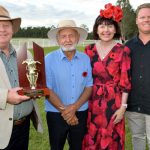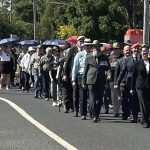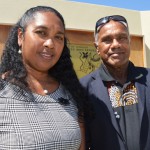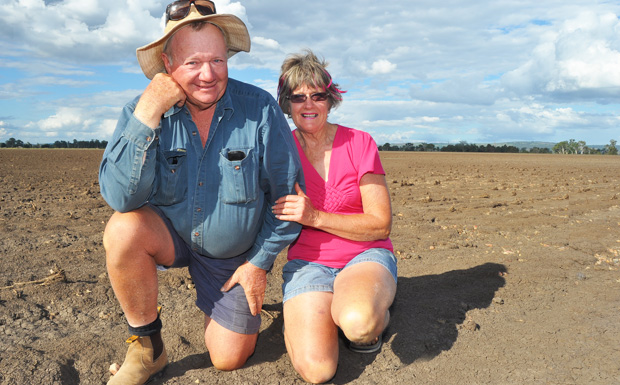
February 6, 2013
The farmers around Byee and Silverleaf are hurting … their crops, and more importantly, their topsoil was washed away during the Australia Day weekend floods.
Some also lost cattle, many were stranded on their properties for days without power, and it could take years to get their farms profitable again. But there’s still no word on whether they will become eligible for a higher level of Natural Disaster Relief.
Currently the South Burnett council area is classified as Category B under the joint Federal / State “Natural Disaster Relief and Recovery Arrangements” (NDRRA).
The adjoining Gympie Regional Council and North Burnett Regional Council areas are both rated at the higher Category C level.
The South Burnett Regional Council, AgForce, the Queensland Dairyfarmers Organisation and local MPs are all pressing for the higher level, but so far this has been denied.
But it’s the farmers who are feeling the real pressure.
* * *
Peter and Marg Enkelmann have 900 acres under irrigation in the Silverleaf area. Over the Australia Day long weekend they received 300mm of rain, or at least that’s what the gauge read when it went under water.
Barambah Creek broke its banks on the Sunday morning, spilling across the floodplain for the second time in recent years. But unlike the 2011 floods, this time the water roared through the property at speed, washing away crops, fences, irrigation infrastructure and, most importantly, topsoil.
Peter and his son Brett tried to pull their irrigation pumps up onto higher ground before the water rose, but they were soon chest deep in water.
In fact, Brett found himself stranded on his parents’ property on one side of the torrent while his wife Kay was left to fend for herself – and the family’s cattle – on the other. He was only reunited with his wife after an SES flood boat ferried him back home five days later …
The water washed into the Enkelmann’s laundry but fortunately didn’t enter their house. But the family felt a lot less fortunate when they managed to get outside to inspect the damage that had occurred to their family farm.
“In 2011 we held most of our soil,” Peter explained. “We could get the soil back working reasonably quickly. After 12 months, we had about 60 per cent of the area back.
“This time it’s going to take two or three years at least.”
The family had 400 acres of popcorn planted; only 40 acres are now left. There were 230 acres of cotton, and this is “pretty much all gone”. Some of the cotton is dead, some is still a little green but the crop is running out of time to recover.
Their plans to plant navy beans also appear thwarted as they won’t be able to get irrigation water to the crop.
But it’s the loss of topsoil that have turned parts of their property into a moonscape that is the greatest concern.
Often after a flood, soil can be relocated from one part of the paddock to another but Peter said there was simply not enough soil left to put back on.
It’s going to be a long-term project of cropping, fertilising and manuring to work biomass back into the ground to re-develop a topsoil. And all without anything like profitable yields.
Marg said the family had been on the property for 37 years and they’d never seen water near the house before 2011.
“The last two years the floods have been so much bigger, the patterns of flooding have changed,” she said.
Peter has already engaged an engineer to assess his land to see if a redesign could make the property more “resilient”.
But all this costs money, and the only return the family will make this year is from their remaining 40 acres of popcorn.
Most of their neighbours are in the same boat, or even worse.
Peter reeled off names … some may have 10 per cent of their crop left, some would have zero. And it’s not only the farmers in the central floodplain that have been affected; this time the water also roared down the valleys causing severe erosion and washing away fences and stock.
Peter said his son Brett just couldn’t believe that it had happened again.
“After working so hard through all the heat – even working on Christmas Day – to see it all washed away …” he said.
The Enkelmanns are eager to get back out on their paddocks and start working the areas that can be worked, in strips if necessary.
But not all farmers in the Byee and Silverleaf areas are so optimistic. Some have talked about walking away from farming, handing their farms over to the bank. And everyone is waiting for news about Category C or Category D assistance.
- Listen to an interview with Peter Enkelmann on today’s ABC Country Hour
[Photos: southburnett.com.au and the Enkelmann family]
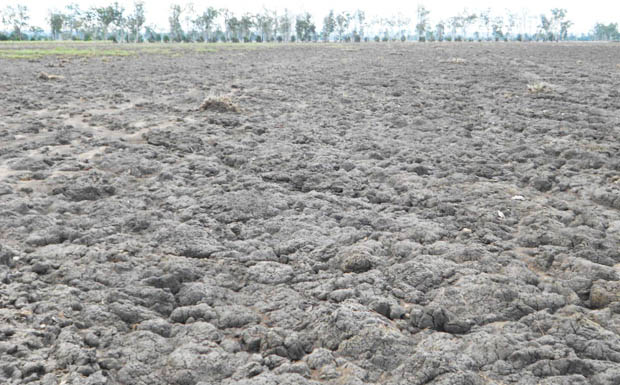
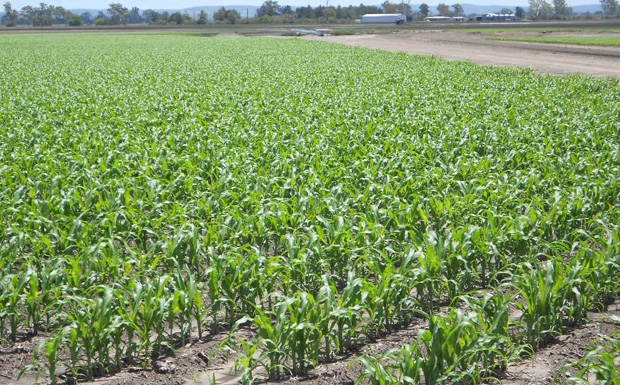
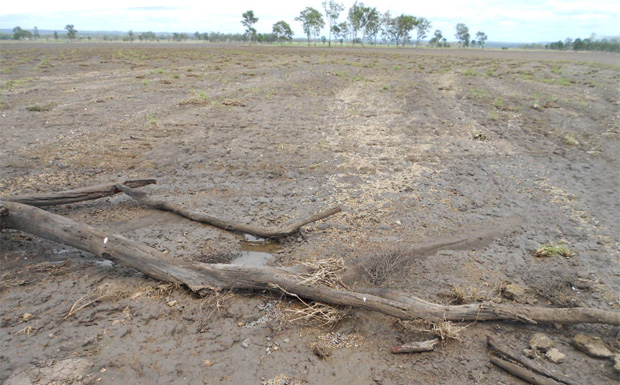
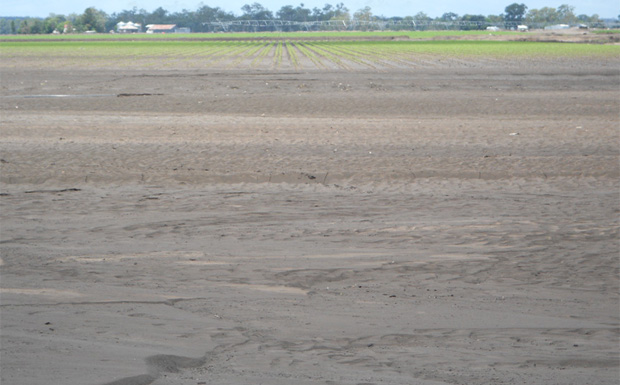
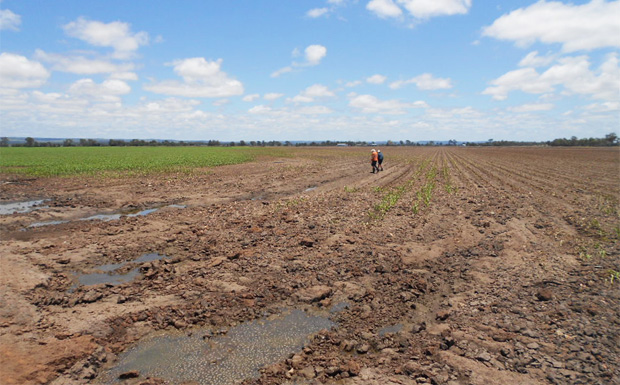
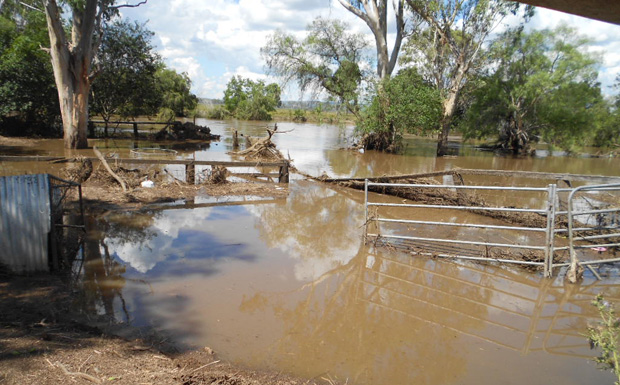
* * *
The three tiers of NDRAA assistance:
- Category B assistance is available for primary producers and small business (less than 20 employees) and provides QRAA concessional loans of up to $250,000. Primary producers also have access to 50 per cent freight subsidies up to $5000.
- Category C assistance provides clean-up and recovery grants for primary producers and small business of up to $25,000. Eligible activities could include purchasing fodder, hiring contractors, clearing debris and leasing / hiring / purchasing of equipment / materials to clean premises or resume farming.
- Category D assistance (highest available support) provides farmers and business owners with technical and professional assistance for developing business recovery plans and assistance to retain their local workers for work such as clean-up and fence repair in the agricultural, fisheries and forestry sector.
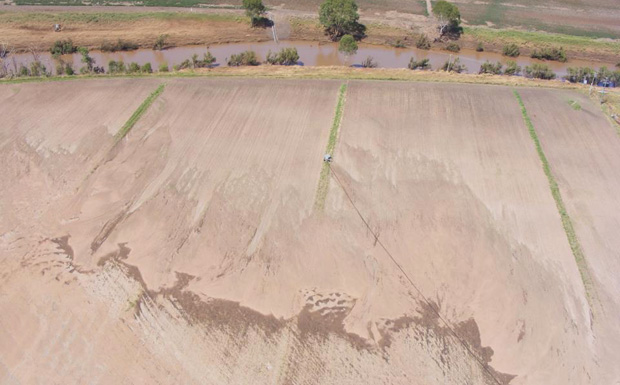
* * *
South Burnett Flood Damage 2013 Survey
Farm financial counsellor Alan Broome, from the Department of Agriculture, Fisheries and Forestry (DAFF), and Bean Growers Australia have been working with the South Burnett Regional Council to survey flood-affected landholders to determine levels of damage.
This is part of the gathering of information to push for greater NDRAA assistance.
Survey forms must be returned by noon tomorrow (Thursday, February 7) so they can then collated.
- Download a copy of the Survey Form (59kb)
* * *
Related articles:







